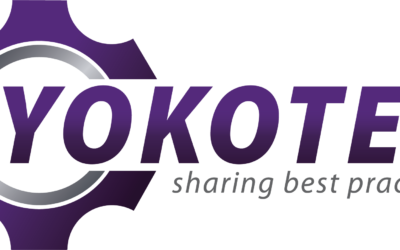MANAGING EMPLOYEE COSTS
Four Employee Killer Costs
I will mention five categories (the fifth relates to the current crisis we have) here:
I. THE BONUS SYSTEM
a. All bonus systems at some point stop working effectively. It is highly likely your present bonus system has not taken into account such a scenario as we have now.
b. Bonus systems are either at the discretion of the manager or are performance related to some form of KPI’s. A discretionary bonus system is nothing more than a system of favouring one group of employees over another. It is a psychological tool to manipulate your employees.
c. You will feel you are rational and fair in how you distribute the bonus.
d. In truth, you are almost certainly lying to yourself, unless of course you are a manager who uses malevolent and delights in blackmail.
e. Most, but not all, performance related bonus systems are nothing more than an abdication of managements responsibility, ability and skills to manage teams. I know this is not a popular statement, but if truth be known, from my observations, I stand by my statement.
f. Management design and implement local, department and team KPI’s which are then rewarded with a bonus system.
g. The main reason management do this is that “management simply abdicates responsibility” to know how to lead people and replaces it with monetary solutions called motivation systems.
h. Which is nothing more than just paying for short term results.
i. Often these “motivational systems” actually do not motive anyone, but create conflict with other departments and resentment towards management.
j. Furthermore, often management is aware, after some time of course, that the monster motivation system they have implemented, is not working.
k. Unfortunately, their darling solution to motivating people is not working. So what happens next?. They do one of two things. A. They start to tinker with the system, by making adjustments or worse, still, b. totally ignoring the pleas from managers, that the system is nothing but a demotivator. Sounds familiar to you?!
l. Motivation systems do not build a good company culture.

II. OVERTIME COSTS
a. From time to time, overtime costs may be necessary for any business.
b. Most companies in 2019 had high overtime costs for most of the year.
c. This simply means you are listening to the Sales Director who is far removed from working for the benefit of the company.
d. Yes, I know it’s a harsh statement but it’s often very true.
e. Prolonged overtime is never good for the machines nor for the employees and does not mean higher profits for the company but actually guarantees much higher costs than any one is prepared to really see.
f. The three cost that are created as a result of continual overtime costs are;
g. Muda, Muri and Mura. Where shop floor employees are responsible for identifying Muda, whilst Muri and Mura are the responsibility of management.
h. Having overtime costs means management are not facing up to their responsibilities in running the business and are pretending everything is fine. Often resulting to a conflict of interests between Production, Planning, Maintenance and Sales departments.
III. SICK LEAVE COSTS
a. Most sick leave costs are a direct result of a failure of management to run the business properly.
b. Review your sick leave figures every day on a whiteboard and compare them per department.
c. High sick leave is due to very specific reasons which have nothing to do with employee physical sickness, but a mental state of mind.
d. Often the root cause is the inappropriate behaviour of the direct line leader or manager of that team or department.
e. Second is pay. Employees feel they are paid unfairly compared to other departments.
f. Third is safety. Psychologically, employees take sick leave because of dangerous conditions they work in.
g. The area of high sick leave is a specialist area in lean management and has a significant correlation to member (employee) care called Mendomi.
h. The concept of Mendomi is little known to the outside World. Toyota does not publicise this incredibly powerful principle of building relationships with employees.

IV. HIGH ROTATION OF EMPLOYEES
a. If you have a high rotation of employees (definition of high is based on your own understanding) then you can be sure the main reason is not any economical factor, but a failure on behalf of management in being able to manage Employee Engagement.
b. Many companies absolutely fail the test here. A good Onboarding system will make a significant difference in reducing rotation of new and current employees if it is implemented by people who are experienced in this field of work.
c. This will require the close co-operation of HR and Production teams in designing, implementing and improving the entire ‘IN” process of bringing in new recruits as well as the entire cycle of looking after and developing employees whilst they stay within your business.

V. WHAT TO DO WITH CURRENT SALARIED COSTS FOR EMPLOYEES?
a. This is the TOP Priority question for many companies right now.
b. Get this one wrong and you will regret it for many years to come.
c. Get it right and you will have a loyal workforce.
Tips for stressed Leaders are:
d. Arrange for a reduction of wages if you really have to.
e. But do not go over 30% in reduction of the monthly salary for the employees for a period of time which is not for longer than 3 months.
f. Do this only if you really have a down-turn in your business.
g. Do not be opportunistic. This is nothing more than exploiting people during difficult times. I have seen this already happening even in the logistics industry which actually is busy right now.
h. Do not back date the pay packet. One company met its employees at the end of March and told them the new reduction in pay would be back dated from 1 March. Well, if that is not exploitation and unethical then I don’t know what is.
i. Promise to compensate the reduction in wages over the next 12 to 18 months.
j. Get the best employees “off-process” and into “Kaizen project improvements”. Yes, this way you get them to cover not only their costs but make savings elsewhere. This is true leadership at work. Needless to say, try not to reduce their salaries.
k. If you must let people go, do this with dignity and respect always.
l. You will be judged if you act with malevolence you can be sure of that.
m. Always be honest and don’t lie to these people.
n. Give them a good reference immediately.
Do not be surprised if you calculate that all these costs (I to IV) account for up to 6% of your yearly sales. I did say these were the “Four Employee Cost Killers”. This is an area where many lean management solutions can make a significant impact on improving your OPEX and EBITDA.
The areas you should look at implementing are: Onboarding and Outplacement, S&OP, Leadership Behaviour, Employee Engagement, Personal Development, Problem Solving and short term intensive Kaizen improvement projects for the smartest employees.
In the next fifth article I will tell you about CAPEX investment project costs.
This article has been produced with the support of the Lean Leadership Way Institute, llw-institute.com within the YOKOTEN principles of sharing best practices.
If you have found this article valuable, please let us know.
Mark Forkun
Right now, we cannot visit our clients and Genba, “Go and See” and advise. What we can do instead is use the internet for online solutions to “listen and advise”.
We can: Perform Virtual Genba walks, listen and advise on your Problem Solving issues. Talk to you through the chaos and sort out what can be visualised, controlled and standardised and what is non-standard and needs a different approach. We can coach, mentor, advise and do training.
On-site work: Prior to entering onto Client premises we go through all the necessary Health & Safety.



